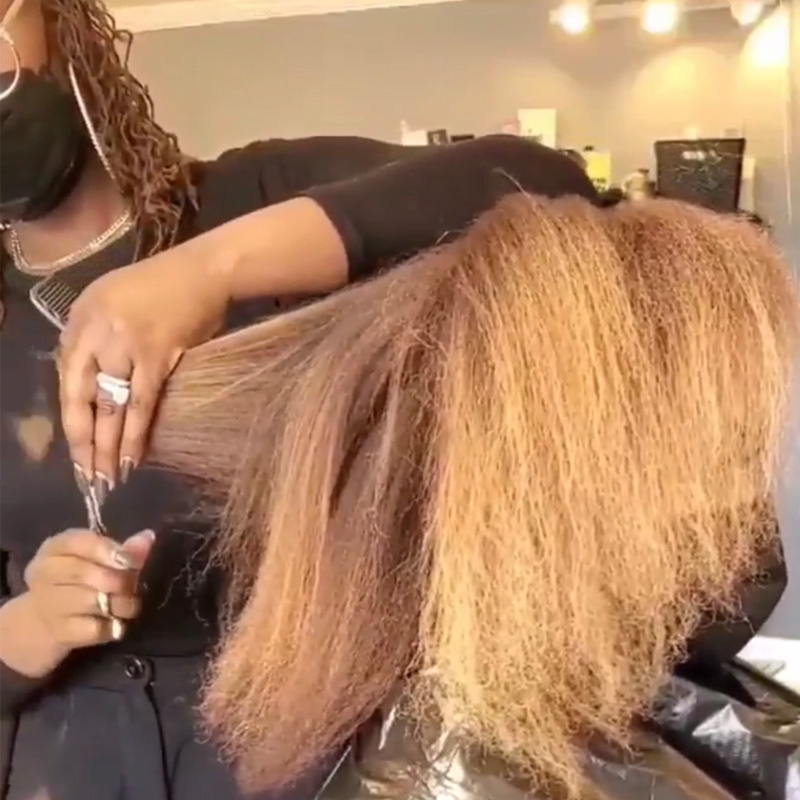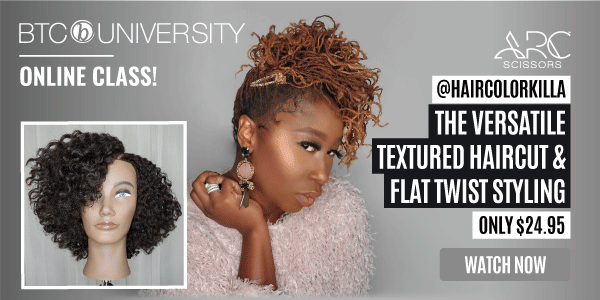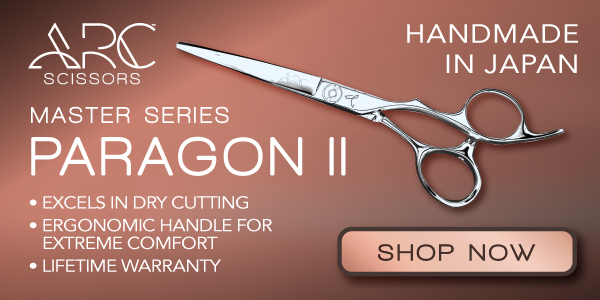6 Tips To Cut Textured Hair Like A Pro
Ask A BTC Expert: 6 Questions & Answers About Cutting Textured Hair
Do you have questions about cutting textured hair? Kara Williams (@haircolorkilla) has answers! We reached out to the BTC community to find out exactly what you want to know about cutting wavy, curly and textured hair. Keep reading to get pro tips on cutting wet vs. dry, when to use tension and more. Then, watch the IGTV for extra dos and don’ts!
Want more tips & tricks?! TAP HERE to watch & learn Kara’s versatile haircut & flat twist styling techniques.
#1: Do you always wash and blow-dry the hair before every haircut?
A lot of Kara’s clients like to style their hair with versatility, aka they wear their hair in more than just their natural curl pattern. When stretching the hair out of its natural curl pattern to do twist outs, rod sets, or occasionally straighten, Kara prefers to work on blow-dried hair.
This way, the hair has enough volume while cutting to see what their hair will look like when they wear it curly, but it is also stretched out enough that there’s a clean, crisp line for when they decide to wear it straight.
Pro Tip: If the client does not stretch their hair out of its natural curl pattern, it is best to cut one curl at a time. This will give them the best haircut for how their natural curl pattern lays.
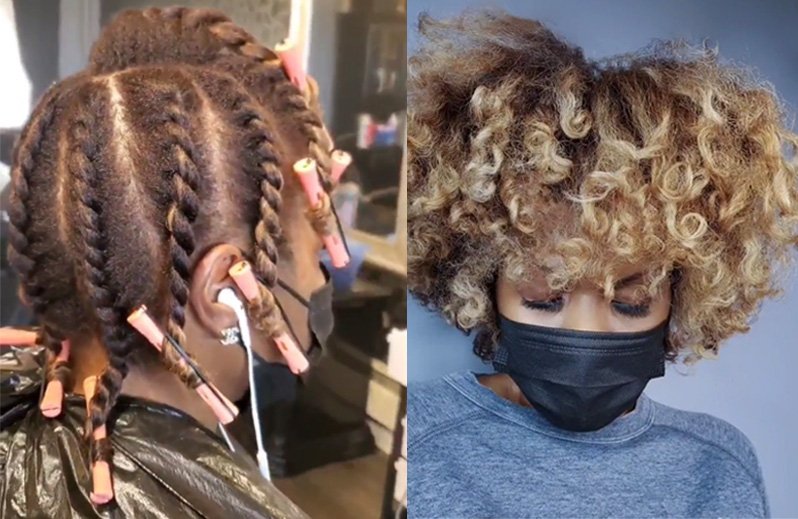
Cut the hair blown-dry like this!
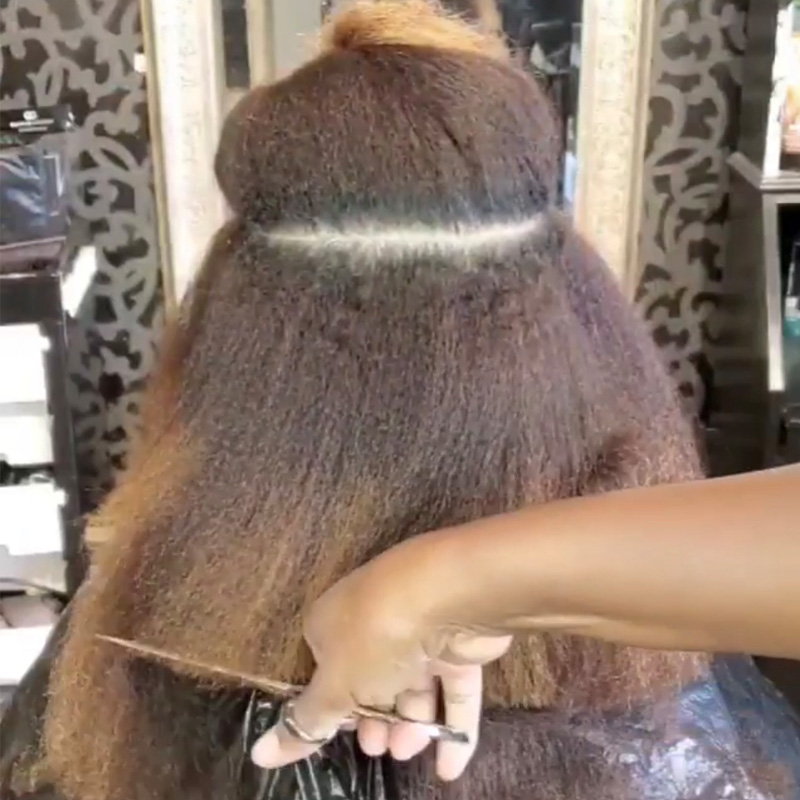
Love to see this versatile color! Swipe to see it look AMAZING worn curly or straight.

#2: How does shrinkage affect the way you cut textured hair?
Shrinkage plays a major part in determining how to approach any textured haircut. During the consultation, Kara makes sure to figure out how much the client’s hair shrinks. She asks to see clients’ selfies to find out how their hair looks when it’s completely dry and styled.
This is also why Kara likes to personally wash and blow-dry their hair before the haircut to see the hair wet, how it curls and how much it shrinks. That way, you will be equipped to know how much additional length you may need to leave to achieve a desired look.
#3: How do you know when you should cut wet or dry?
Here are a few important things to consider before deciding to cut wavy and curly hair wet or dry.
- Curly hair has the ability to shrink up to 50% of its length.
- When the hair is wet, it can stretch a lot longer than it will look like when it’s completely dry. This makes it easy to cut off too much.
- Curly hair falls differently wet to dry and expands a lot.
That being said, here’s when to cut wet vs. dry!
Cut Wet:
- Wavy hair
- Low-shrink hair
Cut Dry:
- Very curly hair
- Shrinks a lot
Tap here to buy Kara’s go-to scissors for cutting textured hair, the PARAGON II from ARC™ Scissors!
#4: What’s best: cutting with or without tension?
Remember there’s no one-size-fits-all way to cut textured hair. During the consultation, you must take into account a client’s everyday lifestyle and desired goals to decide what cutting method is best. Here’s how to assess whether or not Kara uses tension.
Ideal client for using tension, aka pulling the hair out of its natural curl pattern:
- Occasionally straightens hair
- Wears hair stretched out of its natural curl pattern
Ideal client for cutting WITHOUT tension, aka cutting the hair within its natural pattern:
- Never uses heat
- Never stretches out curl pattern
- Doesn’t ever pull the hair out in any way
#5: Should you cut or color first, and why?
A lot of clients want their hair cut and colored during the same appointment, which is great, because it gets them in your chair longer and allows you to accentuate their color with the haircut, and vice versa. Kara recommends always cutting first for a few key reasons.
Reason #1: Product Usage
Textured hair often has higher density, so it can absorb a lot of product. It’s easiest to get rid of hair that won’t be colored eventually to avoid wasting product.
Reason #2: Establish The Shape First
With popular color trends like different gradients, blends and leaving the ends lighter—it’s key to create the shape first, so you can paint following the shape of the hair. The cut will help determine color placement, for example:
- Where to place a money piece, or to skip a money piece if the client wants bangs
- How far to bring the color up on the head based on the haircut
- Where to place brightness on the ends
Tap through some trendy color placements below!
#6: How do you schedule and price haircuts?
Cutting textured hair doesn’t take any longer than a regular haircut, says Kara. She typically schedules about 45 minutes for the haircut and blow-dry, but also prices styling services separately. This way, it’s easier to give the client a more accurate time frame by splitting services up and offering different styling options.
Pricing Specialty vs. Non-Specialty Cuts
- Specialty haircuts, like cutting one curl at a time: This type of cut requires additional education and is not accessible at every hair salon. So make sure to charge appropriately for your education and expanded service menu.
- Non-specialty cuts: If you’re doing a regular haircut, clients with curly and textured hair should not have to pay more. “Hair is hair, and as stylists, we want to be able to offer services to our customers with all textures,” says Kara. Haircut pricing for straight, wavy, curly and textured hair should be the same.
Watch The Full IGTV: Ask A BTC Expert
View this post on Instagram
More from
Kara Williams
-
Blonde
50+ Bronde & Bronze Hair Inspiration Photos
-
Blonde
Warm Honey Blondes & Bronde Hair Inspiration Photos
-
Blonde
The Biggest Hair Color Trends of 2024
-
Red
Deep Cherry Hair Color
-
Blonde
2023’s Biggest Hair Color Trends
-
Balayage
Fall 2022’s Hottest Hair Color Trends
-
#ONESHOT HAIR AWARDS
Bright Apple Red
-
Curly
Curl Care: 5 Common Curl Problems & Solutions
-
Bobs
The 10 Biggest Haircut Trends Of Winter 2021
-
Balayage
Balayage & Blonding Co-Lab #1 at #thebtcshow 2021
-
Fine/ Thinning
5 Ways To Make Hair Look Fuller Using Keratin Hair Fibers
-
Balayage
13 Blondes For Every Type Of Client
-
BTC University
Curly Cutting: 3 Tips For A Versatile Haircut
-
Blonde
Color Fading: 3 Tips To Make Haircolor Last Longer
-
Bobs
10 MUST-SEE CUTTING TIPS FROM 2020
-
Best of 2020
The Top 10 Foil Tips We Learned In 2020
-
Best of 2020
10 Of The Best Toning Tips We Shared In 2020
-
Best of 2020
10 Haircolor Courses From BTC University We Couldn’t Get Enough Of In 2020
-
Manufacturer
#AmplifyDiverseHair For National Diversity Week With Wella—Here’s How!
-
Balayage
5 Foil & Paint Tips For Faster Blonding
-
Balayage
Do All Color Services Come With Haircuts? Here’s Why They Should
-
Blonde
Dear Clients, Read This Before Going Blonde!
-
Blonde
How-To: Transform Curly & Textured Hair In One Highlight Service
-
Hair
Black Hair Through The Decades





